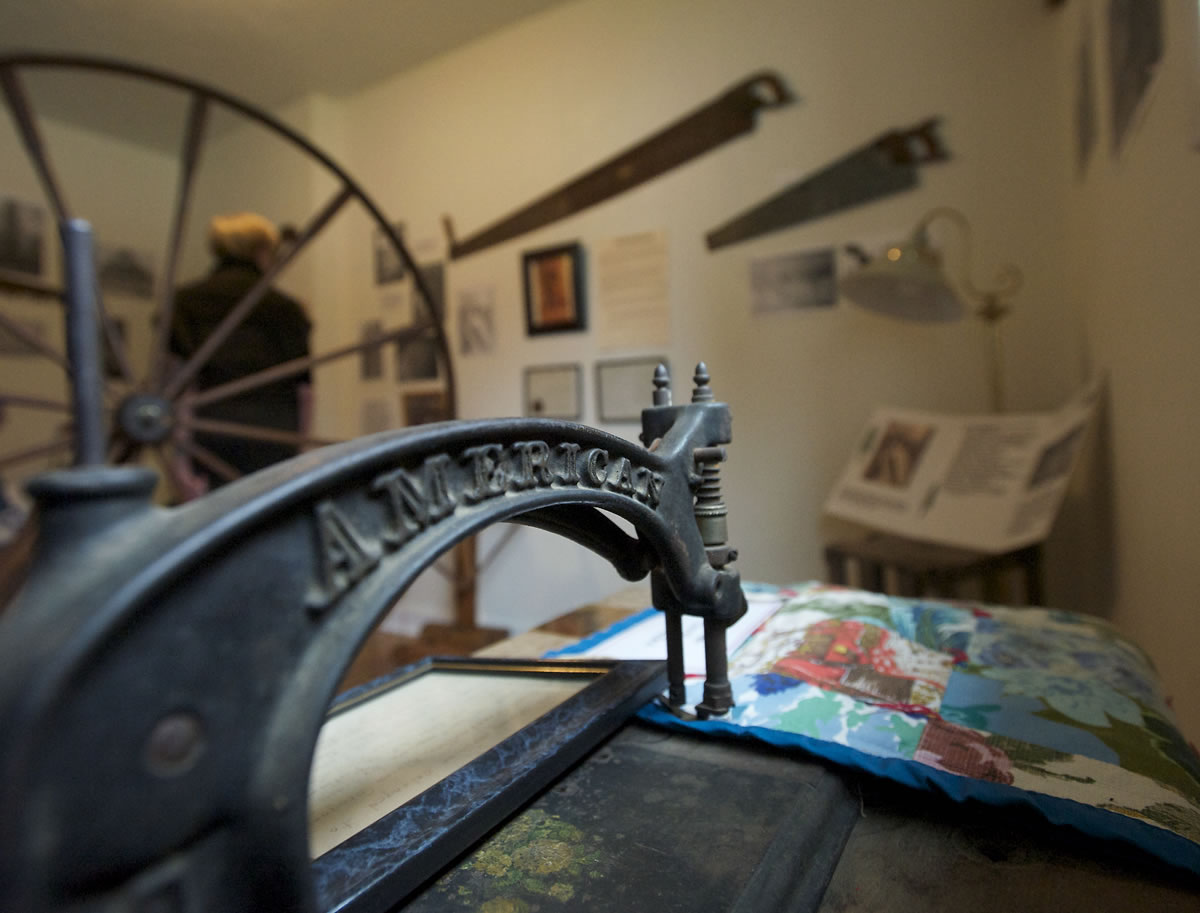Where: 410 W. Fifth St., La Center.
When: Noon to 4 p.m. first and third Saturdays (Wednesdays by appointment).
Information: 360-263-3308 or La Center Historical Museum.
LA CENTER — The story of the old sewing machine reflects some of the historical influences that brought people to Clark County in the past 150 years.
The artifact, which includes an 1869 date on its American Sewing Machine Co. brass nameplate, belonged to a family that left Wisconsin and came to San Francisco by train. The next legs of their journey were by water — from San Francisco to Portland, then by steamboat up the East Fork of the Lewis River to La Center.
Finally, they traveled inland by wagon to their eventual home in the Chelatchie Prairie area.
That wasn’t the end of their adventures, however. In 1902, the Yacolt Burn — the worst fire in Washington history — threatened their farm. The family quickly buried some of their most precious possessions, including the sewing machine, before fleeing. Fortunately, a shift in the wind steered the flames away from the homestead.
That sewing machine is back in La Center now, as an exhibit at the La Center Historical Museum. It is one of many artifacts donated to the museum by Tom Wooldridge, whose family tree includes those people who headed west on the train in the 1800s.
In a county that has been growing rapidly, the museum offers an opportunity for relatively recent arrivals to learn more about the place they now call home.
The newcomers often are far away from where they grew up, and they get interested in the place where they’re raising their families now, said Barbara Barnhart, president of the La Center Museum Association.
They include Maxine Kirk, one of the volunteers who welcomed museum visitors a couple of Saturdays ago.
“It’s always interesting to learn about history,” said Kirk, who moved to La Center from Seattle a dozen years ago.
Logging years
Some of the displays focus on logging equipment that represents the city’s formative years. In a historical account cited by Barnhart, mill owner N.R. Rashford said that 60 percent of railroad ties cut on the West Coast came from the Lewis River Valley. At one point, one of his mills shipped 40,000 to 50,000 board feet of ties into town daily, using wooden chutes — a bit like water slides — called flumes.
Vintage photographs in another section explain why the city has a Sternwheeler Park: It’s a tribute to the steamboat traffic that was the key to commerce more than a century ago.
Other exhibits focus on local pioneers such as John Pollock, a Washington Territorial legislator, and Daniel Cowley, a native of the Isle of Man, in the Irish Sea. He went to sea at 14 and eventually homesteaded near what’s now Paradise Point State Park, west of La Center.
The museum made its debut in July 2010, after almost six years of work.
“We started talking in August 2004,” Barnhart said. “By February 2005, we’d held some fundraising events.”
The family of history buff Margaret Colf Hepola bought the house at 410 W. Fifth St. and made it available for the museum.
“Margaret spearheads all the museums around here,” Barnhart noted.
‘It’s like a clubhouse’
The museum isn’t just a place for exhibiting artifacts and showcasing historical documents.
“It’s like a clubhouse,” said Mary Worley, another volunteer who was welcoming museum visitors on a recent Saturday.
It’s a place where people united by an interest in history can share stories or explain the significance of an artifact or photograph — people like Tom Wooldridge, who donated that sewing machine his relatives buried more than 100 years ago.
That’s not the only burial story Wooldridge can tell. He lives on Pollock Road, which bears the name of the La Center pioneer.
“I bought part of his home site,” Wooldridge said. “John Pollock is buried in my front yard.”




